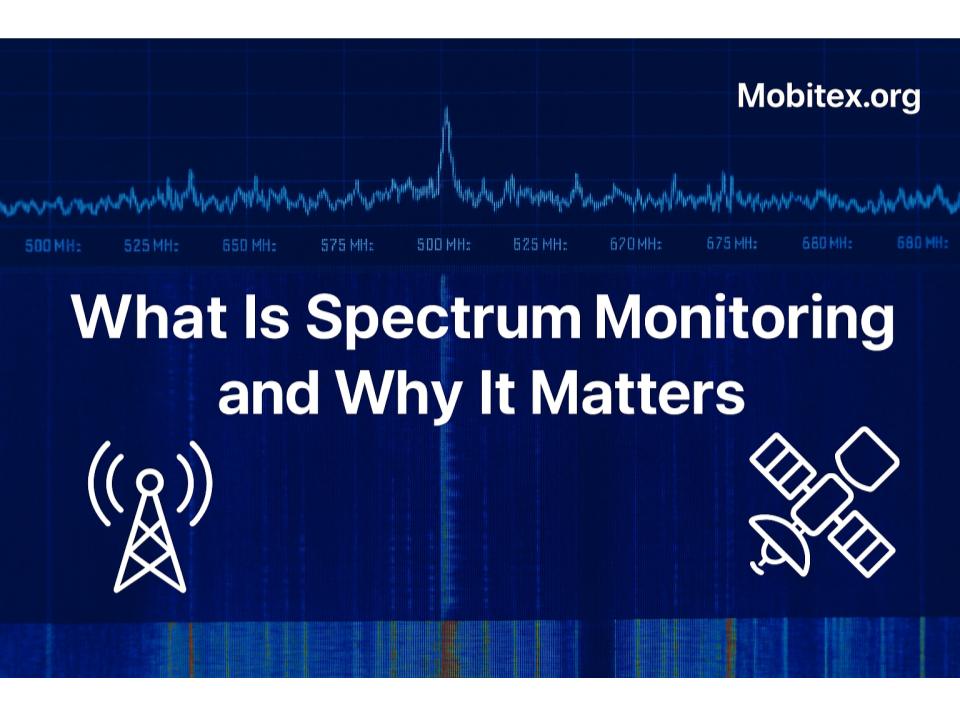📡 Wireless communication touches nearly every part of modern life – from cell phones and Wi-Fi to satellites and emergency radios. Behind all these technologies lies a shared, invisible resource: the radio spectrum.
Spectrum monitoring is how we observe, measure, and protect this valuable resource.
🧭 What Is Spectrum Monitoring?
Spectrum monitoring is the continuous observation and analysis of radio frequencies across a wide range of bands – typically from a few kilohertz to many gigahertz.
It involves using specialized receivers, antennas, and software to detect who is transmitting, where, and at what power level.
Monitoring systems can be:
- Fixed stations, operating 24/7 from one location.
- Mobile monitoring units, mounted in vehicles or aircraft.
- Remote or distributed sensors, using SDRs (Software-Defined Radios) connected over networks.
The data they collect helps regulators, operators, and researchers maintain efficient and lawful use of the spectrum.
⚙️ How Spectrum Monitoring Works
At its core, a monitoring system includes:
- Antennas that cover specific frequency ranges.
- Receivers or spectrum analyzers that tune across those bands.
- Signal processing software that detects, records, and classifies signals.
- Databases and dashboards that visualize the activity — often as waterfalls, heatmaps, or occupancy plots.
Modern systems rely heavily on SDRs, digital signal processing (DSP), and cloud computing for real-time data sharing and analysis.
🚨 Why Spectrum Monitoring Matters
The radio spectrum is finite, yet it’s shared by thousands of technologies — from broadcast TV and mobile networks to satellites and military systems.
Monitoring ensures that everyone follows the rules.
Here’s why it matters:
✅ Regulatory Compliance
National agencies (like FCC, ISED, or Ofcom) use monitoring to ensure that licensed users operate within their assigned frequencies and power limits.
⚡ Interference Detection
Unauthorized transmitters, malfunctioning equipment, or overlapping allocations can cause harmful interference. Monitoring helps identify and locate these problems quickly.
📶 Spectrum Efficiency
By analyzing occupancy over time, authorities can identify underused bands and reallocate them to meet growing demand, such as for 5G and IoT networks.
🛰 Security and Defense
Military and government organizations use spectrum monitoring to detect jamming, spoofing, and illegal transmissions, protecting national infrastructure and communication systems.
🌐 Research and Innovation
Monitoring data helps universities, engineers, and developers understand how real-world spectrum is used, driving innovations in wireless efficiency, sharing, and automation.
🔭 The Future of Spectrum Monitoring
As wireless technologies evolve, so do the monitoring methods.
Future systems will rely more on AI-driven signal classification, crowdsourced sensors, and cloud analytics to build a real-time map of global spectrum activity.
Projects like Electrosense and ITU Spectrum Monitoring Networks are early examples of this distributed intelligence approach something Mobitex.org aims to complement through open data and frequency insight.
🌎 In Summary
Spectrum monitoring is the watchful eye of the airwaves. It protects communication systems, ensures fairness, and enables the expansion of our connected world.
From cellular networks to satellite links, every reliable wireless signal you depend on exists thanks to effective spectrum monitoring.

